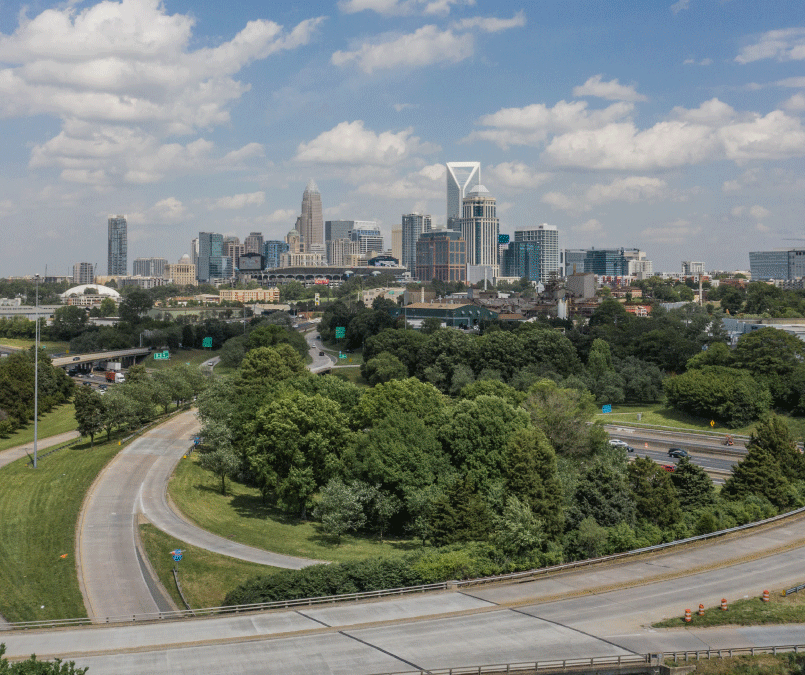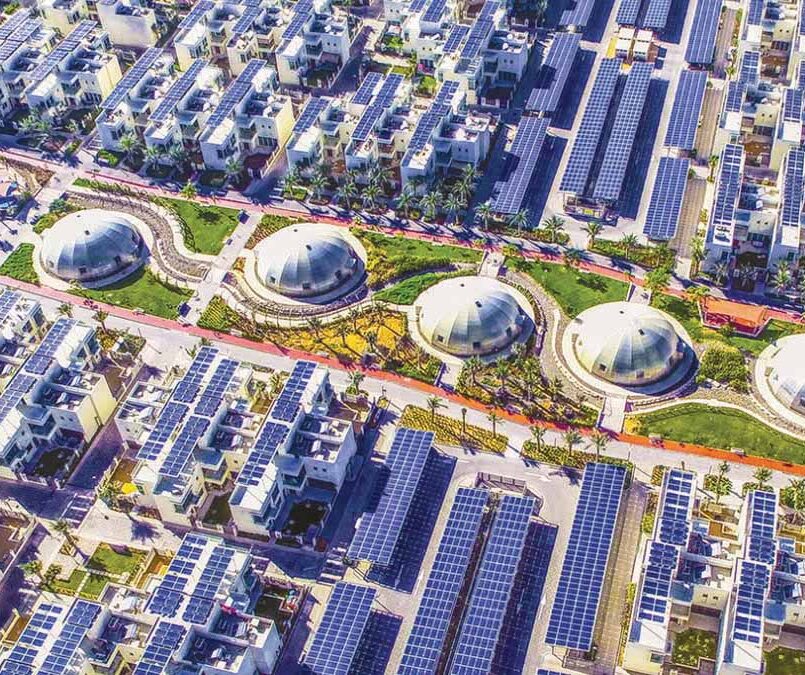Living Green: How Eco Cities are Shaping the Future of Sustainable Urban Life
As cities grow and populations rise, urban areas around the world are embracing eco city principles—designing and building spaces that respect the environment, prioritize sustainable practices, and enhance quality of life for residents. These eco cities represent the future of urban living, with a focus on reducing carbon emissions, conserving natural resources, and fostering social inclusivity. By blending innovation with sustainable planning, eco cities aim to create harmonious, resilient urban spaces that benefit both people and the planet.
The Rise of Eco Cities: Why Sustainability Matters in Urban Planning
Over half of the world’s population currently lives in urban areas, a proportion that is expected to reach nearly 70% by 2050. This rapid urbanization puts significant pressure on resources and infrastructure, often leading to increased pollution, greenhouse gas emissions, and ecological degradation. In response, cities worldwide are embracing eco-friendly practices, transforming conventional urban areas into sustainable, resilient, and people-centered eco cities.
Eco cities aim to address the challenges of modern urban life, such as climate change, limited green spaces, and unsustainable energy use. By integrating environmentally conscious policies and technologies into every aspect of city planning—from public transportation to waste management—these cities strive to create urban environments that not only meet today’s needs but also remain viable for future generations.
Key Features of Eco Cities
Eco cities stand out for their commitment to sustainability across multiple dimensions. Below are the essential features that make eco cities models of modern, sustainable urban living:
- Renewable Energy Sources and Carbon Neutrality
Eco cities aim to minimize their reliance on fossil fuels by investing in renewable energy sources like solar, wind, and geothermal power. Some cities, such as Reykjavik, Iceland, run almost entirely on renewable energy, while others have ambitious targets to achieve carbon neutrality in the coming decades. By reducing greenhouse gas emissions, these cities are working to combat climate change and promote clean, sustainable energy solutions. - Sustainable Transportation Systems
Transportation is often a significant contributor to urban emissions, but eco cities prioritize sustainable, low-emission transit options. This can include extensive public transportation networks, electric buses, bicycle lanes, and pedestrian-friendly streets. For instance, Copenhagen has integrated bike lanes throughout the city, making cycling a primary mode of transportation for residents. In eco cities, efficient transit systems help reduce traffic congestion, improve air quality, and make it easier for people to live without relying on cars. - Green Building Standards and Eco-Friendly Architecture
Eco cities prioritize green building practices to minimize environmental impact and reduce energy consumption. Buildings in these cities often use sustainable materials, energy-efficient designs, and eco-friendly features like green roofs, which provide natural insulation, reduce urban heat, and offer habitats for local wildlife. In cities like Singapore, vertical gardens and rooftop greenery bring nature into the urban environment, enhancing biodiversity and improving air quality. - Waste Reduction and Recycling Programs
Eco cities are committed to minimizing waste through recycling, composting, and waste-to-energy initiatives. The goal is to achieve “zero waste,” reducing the volume of garbage sent to landfills and making better use of resources. San Francisco, for example, has achieved high waste diversion rates through comprehensive recycling and composting programs, and other cities are following suit by implementing policies to encourage waste reduction at both individual and community levels. - Water Conservation and Management
In eco cities, water conservation is crucial. These cities use strategies like rainwater harvesting, stormwater management, and wastewater recycling to reduce water consumption and ensure a sustainable water supply. Green infrastructure such as permeable pavements, rain gardens, and retention basins help manage rainwater runoff, prevent flooding, and recharge groundwater supplies. This focus on water efficiency is particularly important in areas facing water scarcity, as it ensures that urban growth does not compromise local water resources. - Accessible Green Spaces and Biodiversity Conservation
Green spaces play a vital role in eco cities, providing recreational areas, improving air quality, and supporting local biodiversity. Parks, urban forests, and community gardens bring nature into the city, benefiting both residents and wildlife. In cities like Singapore, green spaces are strategically integrated into the urban fabric, creating what is known as a “City in a Garden.” These areas serve as sanctuaries for plants and animals while offering residents a place to connect with nature, exercise, and relax. - Smart Technology and Efficient Resource Management
Many eco cities employ smart technology to monitor and manage resources more efficiently. By using sensors, data analytics, and the Internet of Things (IoT), these cities can track energy usage, optimize waste collection, and even monitor air quality in real-time. Barcelona, for example, uses smart sensors to manage street lighting, optimize water usage, and improve waste management. These innovations not only reduce environmental impact but also enhance the convenience and quality of life for residents. - Community Involvement and Social Inclusivity
Eco cities emphasize the importance of community and inclusivity in urban planning. Mixed-use developments, walkable neighborhoods, and affordable housing are fundamental to creating cities that meet the diverse needs of their residents. Public spaces, community gardens, and local initiatives encourage social interaction and foster a sense of community, which is essential to the social sustainability of eco cities. This people-centered approach ensures that everyone, regardless of income or background, has access to a high quality of life.
Examples of Leading Eco Cities Worldwide
Eco cities around the globe are setting benchmarks for sustainable urban living, showcasing innovative practices and environmental commitment. Here are a few notable examples:
- Copenhagen, Denmark: With extensive cycling infrastructure and a goal to become carbon-neutral by 2025, Copenhagen is a global leader in sustainable urban living.
- Vancouver, Canada: Vancouver’s Greenest City Action Plan focuses on reducing greenhouse gases, promoting clean energy, and expanding green spaces, with the goal of making it the greenest city in the world.
- Masdar City, UAE: Designed from scratch, Masdar City was envisioned as a carbon-neutral urban hub. It uses renewable energy sources and cutting-edge green building techniques to create a self-sustaining environment in the heart of the desert.
- Stockholm, Sweden: Known for its sustainable transportation network and commitment to green energy, Stockholm has been recognized as one of Europe’s greenest cities and aims to be fossil-fuel-free by 2040.
The Benefits of Living in Eco Cities
Eco cities offer numerous benefits that extend beyond environmental preservation, improving the quality of life for residents and setting a new standard for urban living. Key benefits include:
- Reduced Carbon Footprint: By relying on renewable energy and efficient transportation, eco cities help combat climate change by significantly reducing greenhouse gas emissions.
- Enhanced Public Health: With cleaner air, green spaces, and access to nature, residents in eco cities enjoy improved mental and physical health.
- Economic Resilience: Eco cities create jobs in green industries, attract investment, and foster innovation, contributing to long-term economic stability.
- Community Well-being: Eco cities promote social inclusivity and a strong sense of community, making urban living more enjoyable and sustainable for all.
The Road Ahead: Challenges and Opportunities
Despite their many benefits, eco cities face challenges in implementation. High initial costs, political resistance, and the need for behavioral change can hinder progress. Additionally, balancing urban growth with sustainability requires long-term planning and collaboration between government, businesses, and residents. However, with strong policies, public awareness, and innovative technologies, eco cities have the potential to become the norm rather than the exception in urban planning.
Conclusion
Eco cities represent the future of sustainable urban living, providing a model of how cities can grow without compromising the environment or the well-being of their residents. By focusing on renewable energy, sustainable architecture, efficient transportation, and green spaces, eco cities demonstrate that living green is both achievable and essential. As more cities adopt eco-friendly practices, the dream of sustainable, resilient urban living moves closer to reality, offering hope for a greener, healthier planet.





